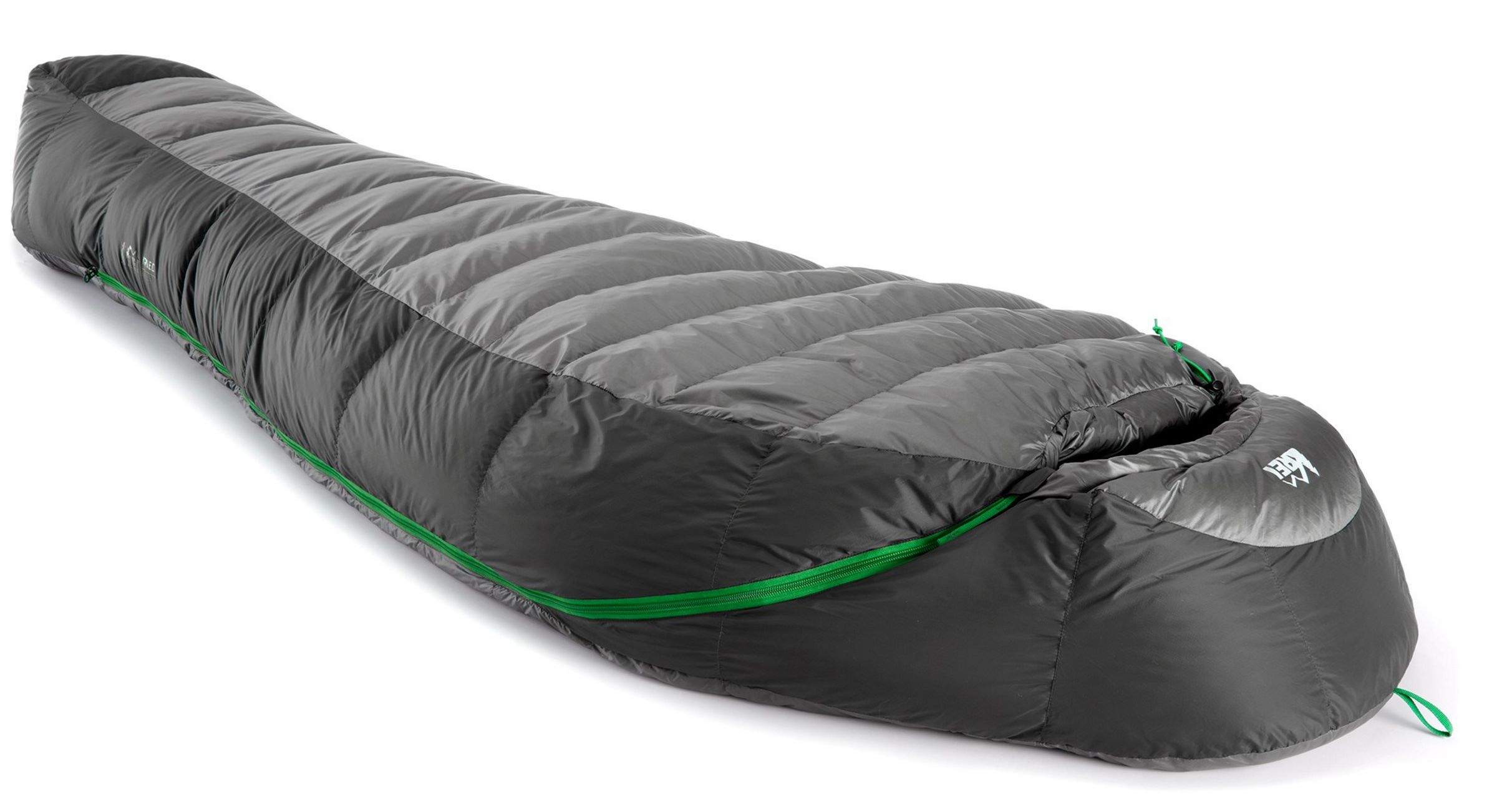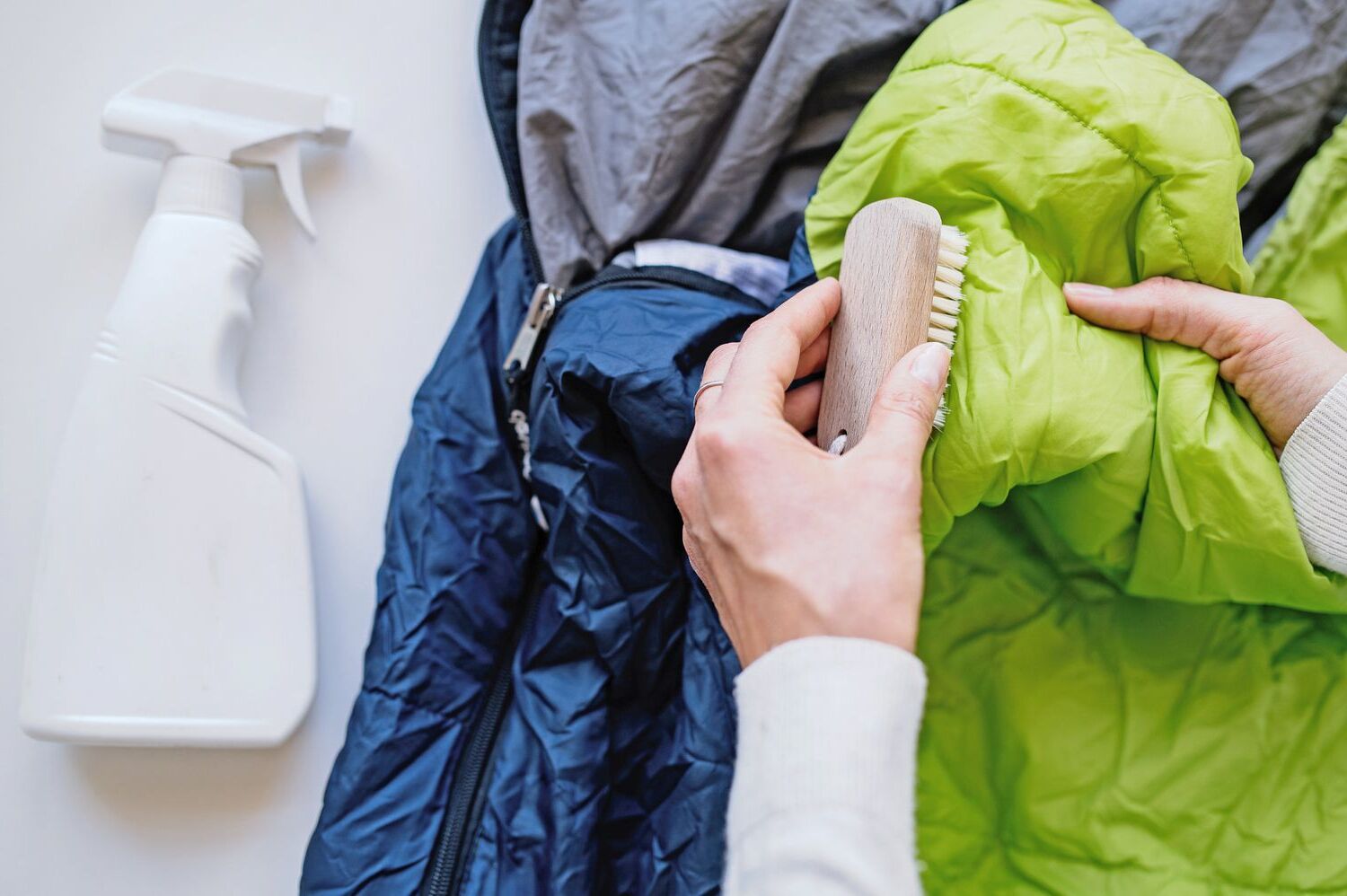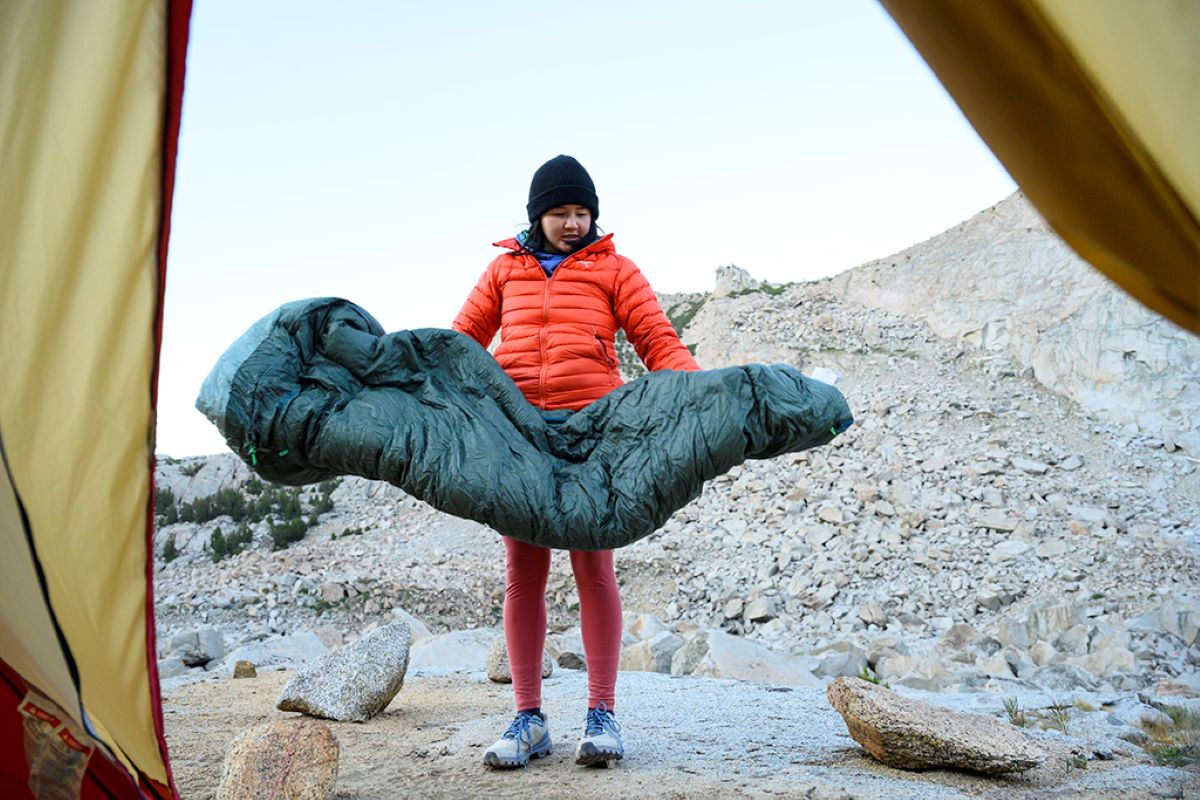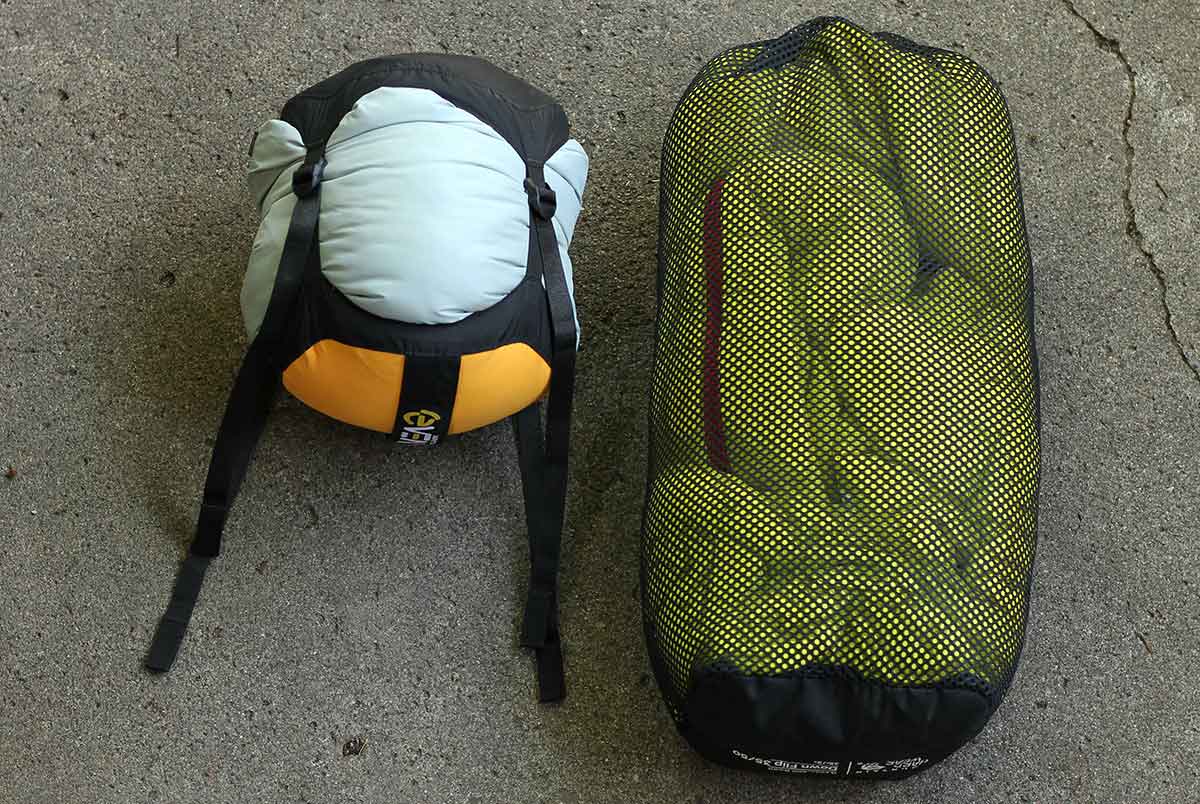

Articles
How To Store Sleeping Bags
Modified: April 22, 2024
Learn the best techniques for storing sleeping bags in this comprehensive articles. Keep your gear in top condition and extend its lifespan with proper storage!
(Many of the links in this article redirect to a specific reviewed product. Your purchase of these products through affiliate links helps to generate commission for Storables.com, at no extra cost. Learn more)
Introduction
Sleeping bags are essential gear for outdoor enthusiasts, campers, and backpackers. They provide warmth and comfort, ensuring a good night’s sleep even in challenging conditions. However, taking proper care of your sleeping bag is crucial to preserve its insulation and extend its lifespan. One important aspect of caring for a sleeping bag is storing it correctly when not in use.
In this article, we will discuss the best practices for storing sleeping bags to keep them in optimum condition. From choosing the right storage location to cleaning and maintenance, we will cover all the essential steps to ensure your sleeping bag remains in top shape between adventures.
Key Takeaways:
- Proper storage in a dry, well-ventilated area protects your sleeping bag from moisture and extreme temperatures, preserving its insulation and fabric for future outdoor adventures.
- Regular inspection, maintenance, and proper cleaning ensure your sleeping bag remains in excellent condition, providing warmth and comfort for years to come.
Read more: How To Store A Sleeping Bag
Choosing the Right Storage Location
When it comes to storing your sleeping bag, selecting the right location is essential. The ideal storage spot should be cool, dry, and well-ventilated. Avoid areas that are prone to high humidity, such as basements, or places where temperature extremes can occur, such as attics or garages.
It’s best to choose a closet or storage area inside your home, where the temperature and humidity levels are relatively stable. This will help prevent damage to the insulation and fabric of the sleeping bag.
Additionally, it’s important to keep the sleeping bag away from direct sunlight. Prolonged exposure to UV rays can degrade the fabric and decrease the bag’s overall performance. So, locate a storage spot that is shaded or cover the sleeping bag with a light cloth or sleeping bag cover if it will be exposed to sunlight.
Furthermore, it’s advisable to keep the sleeping bag off the floor to avoid moisture and potential damage. Place it on a shelf, hang it inside a garment bag, or use a backpacking gear storage system to keep it elevated and protected.
By choosing the right storage location, you ensure that your sleeping bag remains in good condition and ready for your next adventure.
Cleaning and Drying the Sleeping Bag
Before storing your sleeping bag, it’s crucial to clean and thoroughly dry it. This will remove any dirt, sweat, oils, or other contaminants that may have accumulated during your outdoor excursions.
The first step in cleaning your sleeping bag is to check the manufacturer’s instructions. Some sleeping bags are machine washable, while others require hand washing. Follow the recommended cleaning method to avoid damaging the insulation or fabric.
If machine washing is recommended, use a front-loading machine on a gentle cycle with a mild detergent specifically designed for outdoor gear. Avoid using fabric softeners, bleach, or harsh detergents as they can degrade the insulation and reduce its performance.
If hand washing is required, fill a bathtub or large basin with lukewarm water and add the appropriate amount of gentle detergent. Gently agitate the sleeping bag in the water, paying particular attention to soiled areas. Rinse thoroughly with clean water until all detergent residue is removed.
After cleaning, it’s essential to properly dry the sleeping bag. Hang it in a well-ventilated area or lay it flat on a clean surface. Avoid direct sunlight or heat sources like radiators, as they can cause damage to the fabric and insulation. It’s advisable to periodically fluff the sleeping bag by gently shaking it up to distribute the insulation evenly.
Depending on the sleeping bag’s size and fill, drying time can vary. It may take a few hours to a couple of days for the sleeping bag to fully dry. Patience is key to ensure that the sleeping bag is completely dry before storage, as any moisture left can lead to mold and mildew growth.
By cleaning and drying your sleeping bag thoroughly, you remove any dirt or contaminants that can degrade its performance. This step is crucial in maintaining the insulation and extending the lifespan of your sleeping bag.
Rolling vs Stuffing the Sleeping Bag
When it comes to storing a sleeping bag, there are two common methods: rolling and stuffing. Both methods have their advantages and considerations, and choosing the right one depends on various factors.
Rolling a sleeping bag is a preferred method for many outdoor enthusiasts. To roll the sleeping bag, start by laying it flat on a clean surface. Smooth out any wrinkles or folds to ensure proper alignment. Begin rolling from the foot end towards the head end, making sure it is tightly rolled. This method is beneficial as it helps minimize creases and compression of the insulation, preserving its loft and warmth.
On the other hand, stuffing a sleeping bag is a quicker and more convenient method. Simply stuff the sleeping bag into its storage sack or compression stuff sack. This method is convenient for backpackers or those with limited storage space. However, it’s important to note that stuffing can result in more creases and compression of the insulation, potentially reducing its overall performance.
When deciding between rolling and stuffing, consider factors such as the length of your trip, the storage space available, and the type of insulation in your sleeping bag. If you’re embarking on a short trip or have limited storage space, stuffing may be a practical option. However, for longer trips or when you have sufficient storage space, rolling is recommended to maintain the insulation’s loft and ensure optimal performance.
Regardless of the method you choose, make sure to avoid sharp folds or excessive compression that can damage the insulation. If using a compression stuff sack, be cautious not to over-compress the bag, as this can lead to long-term damage to the insulation fibers.
By considering the pros and cons of rolling and stuffing, you can select the most suitable method for storing your sleeping bag and ensure its longevity and performance for future adventures.
Using a Storage Sack or Compression Stuff Sack
When it comes to storing your sleeping bag, using a storage sack or compression stuff sack can help protect it and save valuable space.
A storage sack is a lightweight and breathable bag specifically designed for storing sleeping bags. It typically features a drawstring closure and is made from a durable fabric that allows air circulation. The storage sack helps protect the sleeping bag from dust, dirt, and any potential damage while in storage. It’s important to choose a storage sack that is large enough to comfortably accommodate your sleeping bag without excessive compression.
Alternatively, a compression stuff sack is ideal when you need to minimize the size of your sleeping bag for backpacking or when storage space is limited. The compression stuff sack is designed to compress the sleeping bag tightly, reducing its overall volume. To use a compression stuff sack, first, place the sleeping bag inside and gradually compress it by tightening the straps or compression system. However, it’s crucial to strike a balance between compression and maintaining the insulation’s loft. Avoid over-compressing the bag, as it can damage the insulation in the long run. Only compress the bag enough to save space without compromising its functionality.
Whether you choose a storage sack or a compression stuff sack, ensure that the sleeping bag is clean and completely dry before storing it. Any moisture left in the bag can lead to mold or mildew growth, compromising its performance.
It’s important to note that using a storage sack or a compression stuff sack is not a substitute for proper cleaning and maintenance of your sleeping bag. However, it does offer an additional layer of protection during storage and transportation.
Remember to label the storage sack or compression stuff sack with the sleeping bag’s specifications, such as temperature rating and size, for easy identification and organization.
By utilizing a storage sack or compression stuff sack, you can keep your sleeping bag protected, organized, and save valuable storage space for your outdoor gear.
Store sleeping bags in a large cotton storage sack or hang them in a cool, dry place to maintain loft and insulation. Avoid compressing them for long periods to prevent damage to the insulation.
Read more: How To Store A Down Sleeping Bag
Avoiding Moisture and Extreme Temperatures
Moisture and extreme temperatures are two factors that can negatively affect the performance and durability of your sleeping bag. Taking precautions to avoid these conditions will help ensure that your sleeping bag remains in optimal condition over time.
First and foremost, it’s crucial to keep your sleeping bag dry at all times. Moisture can lead to the growth of mold, mildew, and bacteria, which can damage the insulation and fabric of the sleeping bag. Avoid storing a damp or wet sleeping bag as it can create the perfect environment for these harmful elements to thrive.
If your sleeping bag gets wet during use or encounters rain or snow, take the necessary steps to dry it thoroughly before storing. Hang it up in a well-ventilated area or use a fan to speed up the drying process. Ensure that the bag is completely dry, both inside and out, to prevent any moisture from being trapped within.
Additionally, it’s important to protect your sleeping bag from extreme temperatures. High heat can melt or damage synthetic insulation, and extreme cold can cause the insulation to become brittle and less effective. Avoid storing your sleeping bag in places that are subject to extreme temperature fluctuations, such as attics, garages, or vehicles.
If you’re planning to store your sleeping bag in a location that is exposed to temperature extremes, consider using a climate-controlled storage unit. These units are designed to maintain stable temperature and humidity levels, providing an ideal environment for storing sensitive items like sleeping bags.
Furthermore, when on camping trips, try to avoid placing your sleeping bag directly on the ground where it can come into contact with moisture. Use a groundsheet or a camping pad to provide an extra barrier and insulation from the cold and dampness.
By avoiding moisture and extreme temperatures, you can protect your sleeping bag from potential damage and ensure its longevity and optimal performance for future outdoor adventures.
Storing the Sleeping Bag in a Dry Area
Proper storage of your sleeping bag is crucial to maintain its performance and extend its lifespan. One of the most important aspects of storage is ensuring that the sleeping bag is stored in a dry area.
Moisture is the enemy of sleeping bag insulation and fabric. It can lead to the growth of mold, mildew, and bacteria, which can cause damage and affect the functionality of the sleeping bag. Therefore, it’s essential to store your sleeping bag in a dry environment to prevent moisture-related issues.
Select a storage location that has low humidity levels and good air circulation. Avoid areas prone to dampness, such as basements or poorly ventilated spaces. Moisture can seep into the sleeping bag if stored in these conditions, even if the bag is properly cleaned and dried before storage.
If you live in a humid climate or are storing the sleeping bag for an extended period, consider using moisture-absorbing products such as silica gel packets or moisture-absorbing crystals. Place these packets or crystals inside the storage sack or compression stuff sack to help absorb any excess moisture and maintain a dry environment for the sleeping bag.
Ensure that the storage area is free from potential leaks or sources of water. Keep the sleeping bag away from pipes, windows, or any other areas where water might infiltrate and cause dampness. It’s also advisable to keep the sleeping bag elevated off the floor to avoid any potential moisture from ground contact.
Regularly inspect the storage area for any signs of moisture or water damage. If you notice any dampness or condensation, take immediate action to dry out the area and check that the sleeping bag has not been affected.
By storing your sleeping bag in a dry area, you reduce the risk of moisture-related damage, helping to preserve the insulation and fabric, and ensuring that the sleeping bag is ready for your next outdoor adventure.
Regular Inspection and Maintenance
To ensure the longevity and optimal performance of your sleeping bag, regular inspection and maintenance are essential. By taking the time to inspect and care for your sleeping bag, you can identify any signs of wear and tear and address them promptly.
Begin by visually inspecting the sleeping bag after each use. Look for any rips, tears, or loose stitching in the fabric. Pay attention to the zipper, drawstrings, and other fasteners to make sure they are functioning properly. If you notice any damage, mend it as soon as possible to prevent further deterioration.
Regularly check the insulation of the sleeping bag as well. Over time, the insulation can clump, shift, or degrade, affecting its ability to provide warmth. Gently shake the sleeping bag to ensure that the insulation is evenly distributed. If you notice any areas with excessive flat spots or clumping, gently massage the affected areas to redistribute the insulation.
It’s also important to maintain the loft of the insulation. Loft refers to the ability of the insulation to trap air and provide warmth. After storing the sleeping bag, fluff it up by gently shaking and pulling on it. This will help restore the loft and ensure that the insulation functions optimally during your next use.
In addition to regular inspection, it’s advisable to wash your sleeping bag periodically, following the manufacturer’s instructions. Cleaning the sleeping bag removes dirt, oils, and other contaminants that can affect its performance. Ensure that the sleeping bag is completely dry before storage to prevent any moisture-related issues.
Lastly, when not in use, store your sleeping bag in a cool, dry, and well-ventilated area, ideally in a storage sack or compression stuff sack. This helps protect the sleeping bag from dust, dirt, and potential damage.
By incorporating regular inspection and maintenance into your sleeping bag care routine, you can identify any issues early on and address them promptly. This proactive approach ensures that your sleeping bag remains in excellent condition and can provide you with years of comfortable and enjoyable outdoor adventures.
Conclusion
Properly storing your sleeping bag is essential for maintaining its performance and extending its lifespan. By following the best practices outlined in this article, you can ensure that your sleeping bag remains in optimal condition between adventures.
Choosing the right storage location, such as a cool, dry, and well-ventilated area, is crucial for protecting your sleeping bag from moisture and extreme temperatures. Cleaning and drying the sleeping bag before storage helps remove dirt and contaminants that can compromise its insulation and fabric.
When it comes to storing the sleeping bag, you have the option of rolling or stuffing it. Rolling is recommended for maintaining the insulation’s loft, while stuffing can be practical for saving space in certain situations.
Using a storage sack or compression stuff sack provides additional protection and organization. Just make sure to label the sack with the sleeping bag’s specifications for easy identification.
Avoiding moisture and extreme temperatures is vital for the longevity of your sleeping bag. Moisture can lead to mold and mildew growth, while extreme temperatures can damage the insulation and fabric.
Lastly, regular inspection and maintenance help identify any signs of wear and tear and allow you to address them promptly. Keep an eye out for any damage and take the necessary steps to repair and maintain the insulation’s loft.
By implementing these practices, you can ensure that your sleeping bag remains in top shape, providing you with warmth and comfort during your outdoor adventures for years to come.
Frequently Asked Questions about How To Store Sleeping Bags
Was this page helpful?
At Storables.com, we guarantee accurate and reliable information. Our content, validated by Expert Board Contributors, is crafted following stringent Editorial Policies. We're committed to providing you with well-researched, expert-backed insights for all your informational needs.















0 thoughts on “How To Store Sleeping Bags”